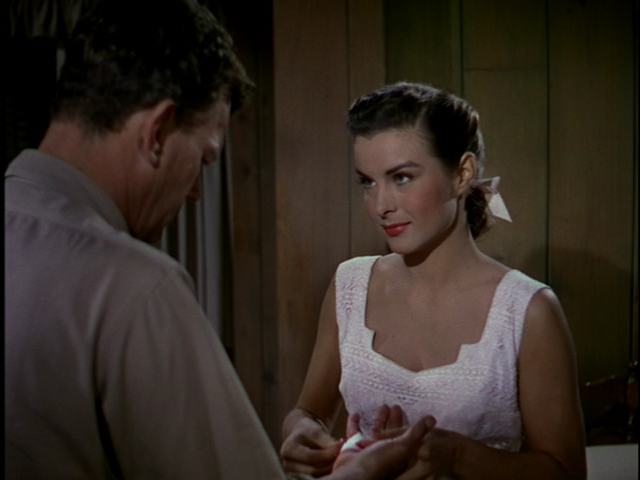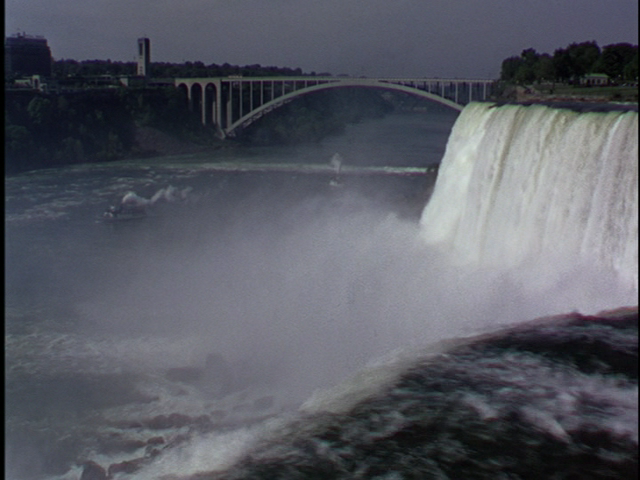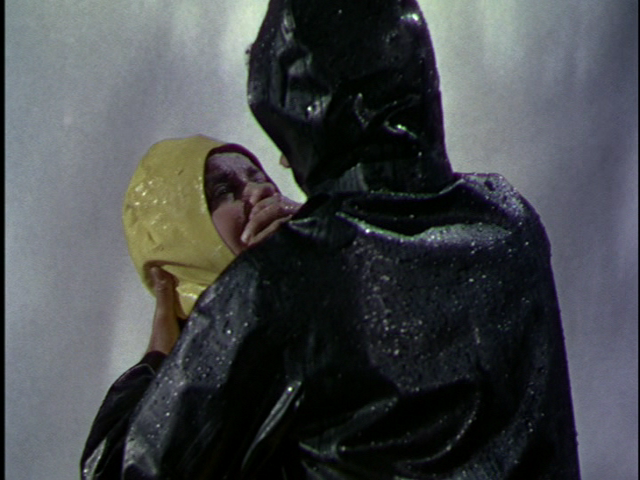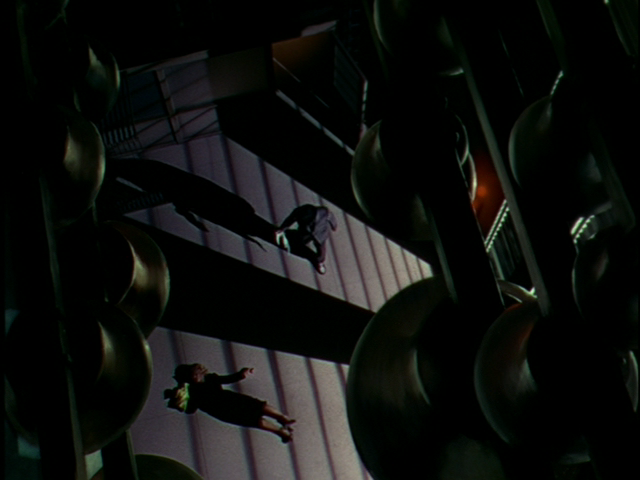|
Genres, Themes, Actors, and Directors:
- Henry Hathaway Films
- Homicidal Spouses
- Infidelity
- Jean Peters Films
- Joseph Cotten Films
- Marilyn Monroe Films
- Newlyweds
- Plot to Murder
- Veterans
Response to Peary’s Review:
As Peary notes, this “taut melodrama” — best known for starring Marilyn Monroe in one of her few “bad girl” roles — benefits from director Henry Hathaway’s “strong use of color, sharp camera angles, and location shooting — particularly around the falls.” The pulpy noir screenplay (co-written by Charles Brackett, Walter Reisch, and Richard Breen) is clever, with several unexpected twists along the way, and a refreshingly three-dimensional, psychologically ambiguous “villain” (Cotten). Monroe is as sexy as ever, and Hathaway manages to captures her at her sultry best, whether writhing nude under the covers or flaunting her bodacious curves in form-fitting dresses and skirts; although she’s not the primary protagonist (that designation goes to Peters), she’s clearly the main attraction of the film. Peters, meanwhile, is effectively gutsy as the “all American housewife” who finds herself drawn into her neighbors’ dysfunction; it’s too bad she’s saddled with such a lame-brain husband (Adams, a.k.a. Max Showalter), whose very presence grates on one’s nerves.
Redeeming Qualities and Moments:
- Marilyn Monroe in a rare “wicked woman” performance

- Jean Peters as Polly Cutler

- Excellent use of Niagara Falls locales

- Several genuinely tense and exciting scenes

- Effective “Technicolor noir” cinematography

Must See?
Yes, simply to see Monroe in a rare “bad girl” performance.
Categories
- Noteworthy Performance(s)
Links:
|
One thought on “Niagara (1953)”
A must! An absolute knockout of a semi-thriller. Its elements as a genuine thriller are minimal. It does play more like a melodrama with its ordinary plotline: adultery. However, though the fundamentals of the plot are rather ordinary, that’s where anything ordinary about this movie ends.
And it takes place, of course, in one of the most stunning backdrops for a film – of which the screenwriters and director Hathaway have taken full advantage.
As stated, the clever plot twists are unexpected. They come in such a way as to make this lean, 90 min. tale seem like it’s meatier as it goes.
Though everyone in the cast is fine (I’m not even all that bothered by Casey Adams, though I can see how some would be), this is Monroe’s show all the way.
What a top-notch showcase for her dramatic skill. I’m certain this is a performance that has come to be appreciated over time. If you think about it, there isn’t a single moment, really, when she isn’t doing something interesting, subtle or, as suits her character, shrewd.
A particularly stunning MM moment comes after she requests that someone play a recording of the song ‘Kiss’ and she sinks into the song’s unabashed romanticism –
Adams: You kinda like that song, don’t you, Mrs. Loomis?
Monroe: There isn’t any other song.
– and the camera more or less closes in on MM as she rapturously sings along.
‘Niagara’ intrigues me with its use of romantic songs in general. Specifically the ones played seemingly endlessly by chimes in a bell tower. Oddly, the chimes make most of the love songs sound almost mournful. ‘O Promise Me’ actually has the resonance of a death knell. (A fave: the quick-cut shots of the silent chimes at a critical turning point in the story.)